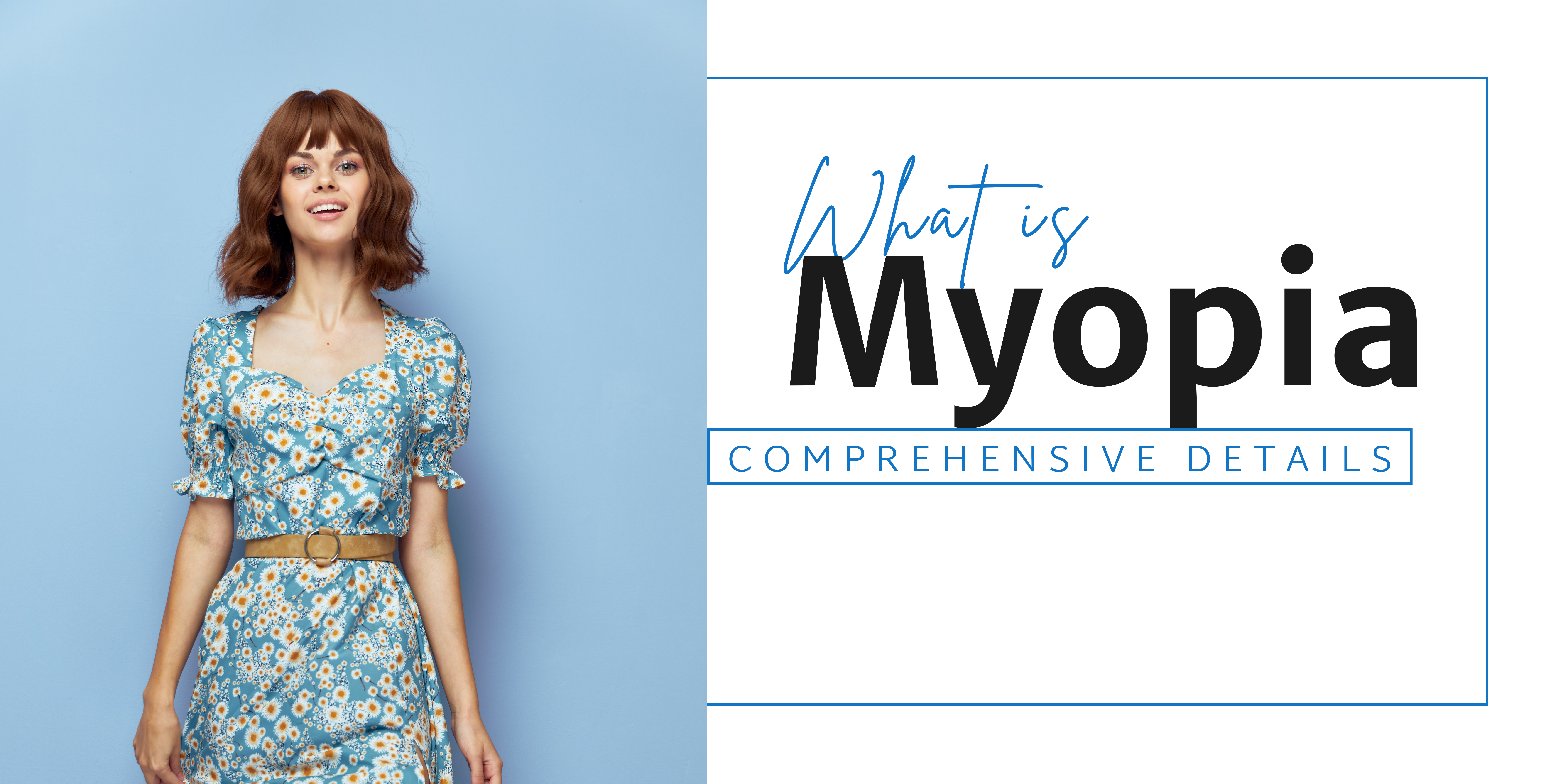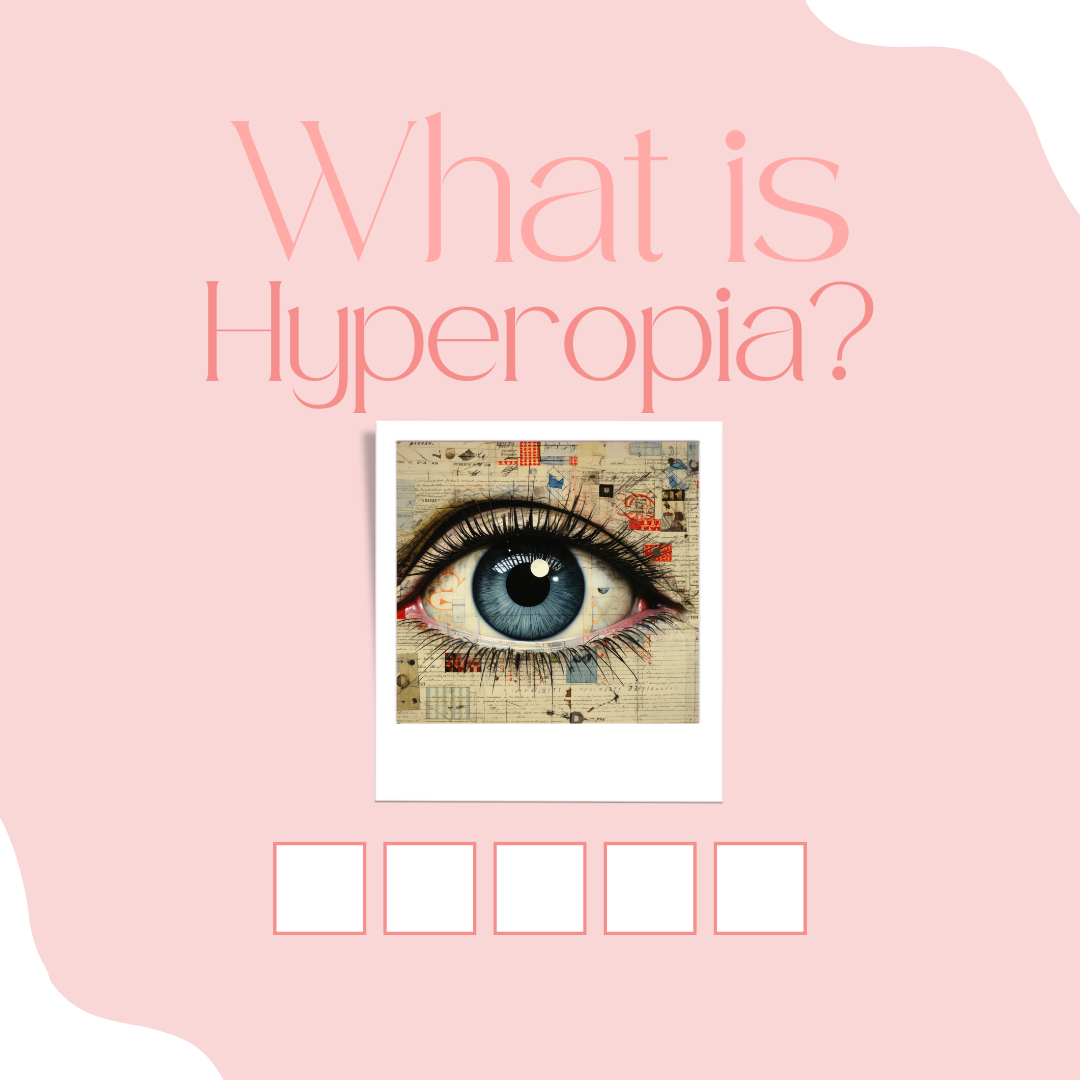Nearsightedness: What Is Myopia[ Causes and Treatment]

Nearsightedness, also known as myopia, refers to a condition where close-up objects appear clear, but distant objects appear blurry. For example, you may have no trouble reading a map up close but struggle to see clearly enough to drive a car. In this article, we'll delve into every detail of myopia, providing a comprehensive understanding of the condition and its effects on vision.
What is Myopia?
Myopia, or nearsightedness, occurs when light entering the eye is focused incorrectly in front of the retina rather than directly on it. This leads to difficulty seeing distant objects clearly. Research indicates that over 125 million people in the United States require vision correction for myopia. While genetics are a factor, environmental influences such as prolonged close work can also contribute to its progression.
How Common Are Myopia?
Myopia, which affects nearly 30% of the U.S. population, remains a prevalent vision condition. While its exact cause remains unknown, there's strong evidence suggesting a hereditary link. If one or both parents are nearsighted, their children have an increased likelihood of developing myopia.
Recent studies, such as the Sydney Myopia Study, reveal a growing trend in myopia among teenagers, with 31% of 17-year-olds affected. This prevalence has notably increased compared to studies conducted a decade ago. It is reported that there are over 80 million myopic children world wide
Globally, high myopia, defined as over 5.00 D of myopia, affects approximately 2.9% of the population, totaling around 224 million people as of 2010.
Related: Refractive Error Statistics
Common Types of Myopia
Myopia is categorized into two main types: simple myopia and pathologic myopia, also known as degenerative myopia. Individuals with simple myopia typically use contact lenses or glasses to achieve clear vision.
However, those with pathologic myopia may struggle to attain clear vision even with corrective lenses.
Non-pathologic(simple) myopia occurs when the eye's refractive structures develop normally, but the refractive power doesn't align with the axial length of the eye. This type of myopia is typically mild to moderate (less than 6.00 diopters) and often starts during childhood or adolescence.
Myopia progression usually continues during the adolescent growth period, slowing down or stabilizing in the early second decade of life. However, a second myopic shift may occur later in the second or early in the third decade of life, though less commonly.
In contrast, pathologic myopia is characterized by a high degree of myopic refractive error that tends to manifest early in childhood. It's typically defined as a spherical equivalent greater than 6.00 diopters or an axial length exceeding 26.5mm. Individuals with pathologic myopia face a higher risk of developing progressive retinal degeneration and other vision-threatening conditions.
This distinction helps eye specialists understand and address the varying degrees of myopia and its effects on vision.
Myopia Signs & Symptoms
Myopia, or nearsightedness, manifests through various signs and symptoms:
- Eyestrain and headaches are common complaints.
- Squinting becomes necessary to see objects clearly.
- Difficulty arises when trying to see distant objects like road signs or school blackboards.
It's crucial to note that young children might not vocalize their blurry vision, underscoring the importance of regular eye exams. Some children are born with myopia, while others develop it during their teenage years. Blurred vision when focusing on distant objects remains the primary indicator of myopia.
Signs indicating your child might have myopia include:
- Preferring to sit at the front of the classroom.
- Moving closer to the TV or movie screen.
- Showing disinterest in sports or activities requiring good distance vision.
Additional symptoms accompanying blurred vision may include squinting, frequent headaches, and holding objects close to the face for better visibility.
Causes of Myopia
Common Root Causes of Myopia
- Genetics
- Hereditary factors play a significant role.
- Some individuals are more predisposed due to family history.
- Excessive Near Work
- Extended periods of reading or computer use can encourage myopia development.
- Continuous close-up activities strain the eyes, contributing to myopia.
- False Myopia
- Temporary blur occurs from overusing the eyes’ focusing ability.
- Result of strain rather than a permanent change in vision.
- Prolonged Activities Requiring Visual Concentration Up Close
- Intense focus on near objects worsens existing myopia over time.
- Activities like detailed drawing or crafting contribute to myopia progression.
Causes Progressive myopia
The primary factor contributing to myopia progression is the elongation of the eye, also known as axial lengthening.
Several factors can contribute to this:
- Constant Glasses Wear:
- Wearing glasses all the time, especially for tasks like reading or writing, can worsen myopia. For mild myopia, glasses may only be necessary for specific activities like driving or watching TV.
- Glasses Prescription:
- Full correction of myopia with glasses may accelerate progression. Some eye doctors prescribe slightly weaker lenses to mitigate this risk.
- Natural Eye Growth:
- As the eye grows and changes shape, myopia tends to worsen, especially during the teenage years before stabilizing in early adulthood.
- Genetics:
- Genetic predisposition, particularly if both parents are myopic, increases the likelihood of myopia progression.
- Limited Outdoor Time:
- Spending less than 1-2 hours outdoors daily has been associated with myopia progression. Outdoor time allows eye muscles to relax from constant near focusing.
- Digital Device Use:
- Excessive use of smartphones, tablets, and computers can strain the eyes and contribute to myopia progression.
- Prolonged Near Vision Tasks:
- Activities like reading, writing, and prolonged computer or smartphone use can strain the eyes and exacerbate myopia progression.
Diagnosis
Diagnosing myopia typically involves a series of tests conducted during a comprehensive eye exam:
- Visual Acuity Test:
- You'll read letters on a chart to assess your ability to see at various distances.
- Retinoscopy:
- A technique to objectively measure refractive error by observing the reflection of light off the retina.
Tests of eye focusing abilities may include:
- Near-to-Distant Focus Switching:
- Evaluating your ability to maintain clear vision while shifting focus between near and distant objects, essential for activities like driving.
- Extended Focus Maintenance:
- Assessing your capability to sustain clear vision over prolonged periods, such as reading or computer work.
If diagnosed with myopia, your eye doctor will provide a prescription for corrective eyeglasses or contact lenses tailored to address your specific vision needs. These interventions aim to correct refractive errors and enhance visual clarity for daily activities.
Prevention
Optometrists trained in Myopia Management offer effective treatments to address myopia progression. Research highlights lifestyle habits like excessive screen time as factors influencing myopia.
To reduce these effects, follow these guidelines:
- Limit Screen Time:
- Reduce phone usage and take regular breaks, at least every hour.
- Adjust Screen Setup:
- Maintain a distance of 18-24 inches from the screen.
- Optimize brightness and contrast to reduce strain.
- Minimize glare for better vision.
- Practice Eye Care Habits:
- Blink frequently to keep eyes moist.
- Follow the 20-20-20 rule: every 20 minutes, look at something 20 feet away for 20 seconds.
- Spend Time Outdoors:
- Aim for 60-80 minutes outdoors daily.
- Natural light helps relax eye muscles and promotes distant focusing, contributing to myopia management.
These measures encourage healthy eye habits and may help slow the progression of myopia.
Treatments For Myopia
Eyeglasses remain the most common and effective solution for achieving clear distance vision in individuals with myopia. The necessity of full-time wear of glasses often correlates with the severity of the myopic prescription.
For those with higher prescriptions, consistent wear throughout the day is typically required to maintain clear vision. On the other hand, individuals with milder forms of myopia may find that glasses are only needed for specific activities that demand distance vision, such as driving or watching television.
When it comes to eyeglasses, there are different types of lenses available depending on individual needs:
- Single-Vision Lenses: These lenses provide consistent vision correction for all distances, ensuring clear vision whether near or far.
- Bifocal or Multifocal Lenses: Particularly useful for individuals over the age of 40 who may experience presbyopia (difficulty focusing on near objects). These lenses incorporate different optical powers throughout the lens, catering to both near and distant vision needs.
Alternatively, many myopic individuals opt for contact lenses due to their wider field of view and the absence of frames, which can be preferred for aesthetic or social reasons. Contact lenses offer enhanced comfort during activities like sports. However, it's crucial to adhere to strict hygiene practices to prevent eye infections and maintain optimal eye health.
For those seeking more permanent solutions, refractive surgeries like LASIK (laser in situ keratomileusis) or PRK (photorefractive keratectomy) are available. These procedures reshape the cornea to improve the eye's focusing abilities, providing clear vision without the need for corrective lenses.
In cases where laser surgery is not suitable, other refractive surgery options may be considered. Phakic intraocular lens implantation involves placing an implant in front of or behind the natural lens of the eye to correct vision.
Similarly, clear lens extraction with intraocular lens implantation replaces the eye's natural lens with an artificial one for vision correction. These procedures are typically recommended for individuals with high myopia who are not suitable candidates for laser surgery.
Long Term Risk/ Complications
Nearsightedness, if left uncorrected, can significantly impact performance in various areas such as school, sports, and work. Moreover, severe myopia poses a heightened risk for serious vision complications, including retinal detachment, macular degeneration, premature cataracts, glaucoma and more.
- Retina Tear/Detachment:
- Myopia causes elongation of the eyeball, leading to a thinner retina.
- Thinner retina increases the risk of tear, hole, or detachment.
- Urgent treatment is necessary to prevent permanent vision loss.
- Cataracts:
- Cataracts result in clouding of the eye's crystalline lens.
- Myopia accelerates the development of cataracts.
- Early signs include increased glare at night and changes in vision.
- Surgery may be required to remove cataracts.
- Glaucoma:
- Increased fluid pressure within the eye characterizes glaucoma.
- Severe myopia raises the risk of developing glaucoma.
- Untreated glaucoma can lead to blindness gradually.
- Macular Degeneration:
- Axial elongation in high myopia can lead to thinning of the retina layers.
- Changes in the macula may result in impaired central vision.
- Myopia Choroidal Neovascularization (CNV):
- Abnormal blood vessel growth beneath the retina characterizes myopic CNV.
- It can cause sudden vision loss if untreated.
- Treatment may involve multiple eye injections.
- Myopic Tractional Maculopathy:
- Lengthening of the eye may cause inner retina layers to pull away from the outer retina.
- Regular monitoring is necessary, and surgery may be required.
- Macular Hole:
- A hole in the macula can lead to blurred and distorted vision.
- Surgery may be necessary to address the issue.
Regular eye check-ups and appropriate corrective measures are crucial in managing and preventing these potential issues associated with myopia.
Coping and Support
The initial step in managing myopia is scheduling a comprehensive eye exam with an eye doctor, who can determine the most suitable myopia control strategy based on your age and requirements.
These strategies may involve:
- Myopia-Control Eyeglasses and Contact Lenses:
- Corrective lenses designed to manage myopia progression.
- Low-Dose Atropine Eye Drops:
- Daily application to slow down myopia progression.
- Overnight Orthokeratology:
- Specialized contact lenses worn overnight to reshape the cornea.
Eye doctors also advise taking frequent vision breaks during prolonged near work to reduce eye strain. Here are some helpful strategies:
- Follow the 20-20-20 Rule:
- Take a 20-second break to look at something 20 feet away every 20 minutes.
- Use the Elbow Rule:
- Ensure that screens are positioned at a distance greater than the length from your fist to your elbow.
- Limit Screen Time:
- Follow age-appropriate guidelines to minimize daily screen time.
Moreover, studies suggest that increased outdoor time during the day can lower the risk of myopia development and progression. Encouraging healthy habits like spending more time outdoors and less time on devices can be beneficial.
Maintaining overall health is also essential for eye health. A balanced diet rich in whole foods, fruits, and vegetables, coupled with regular exercise, contributes to healthy eyes and body. Additionally, wearing sunglasses outdoors helps protect against harmful UV rays.
Regular comprehensive eye exams play a vital role in safeguarding eye health and managing myopia effectively. Make them a routine part of your child's healthcare regimen.
Bottom Line
Whether you opt for eyeglasses, contact lenses, or refractive surgery, there are effective solutions available to manage myopia and achieve clear vision. By consulting with a vision therapy eye doctor, individuals can receive personalized treatment plans tailored to their specific needs and preferences.
Prioritizing eye health through regular check-ups and following recommended guidelines for screen time and outdoor activities can help mitigate the progression of myopia and maintain clear vision for years to come.
Also read What is Hyperopia: Details You Need to Know



